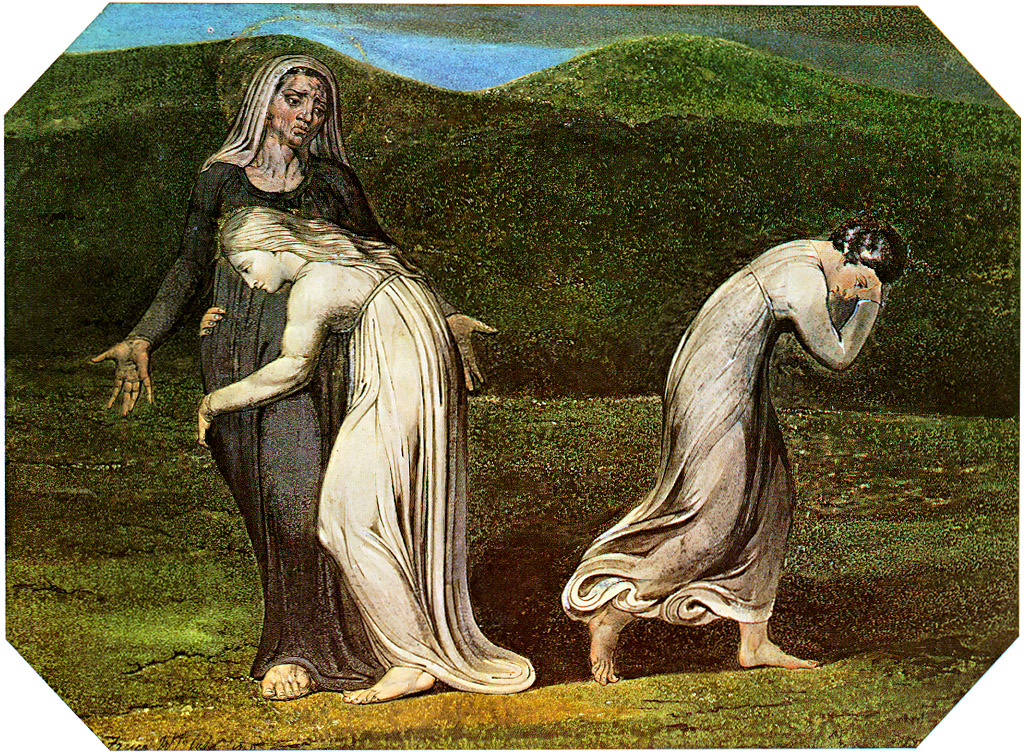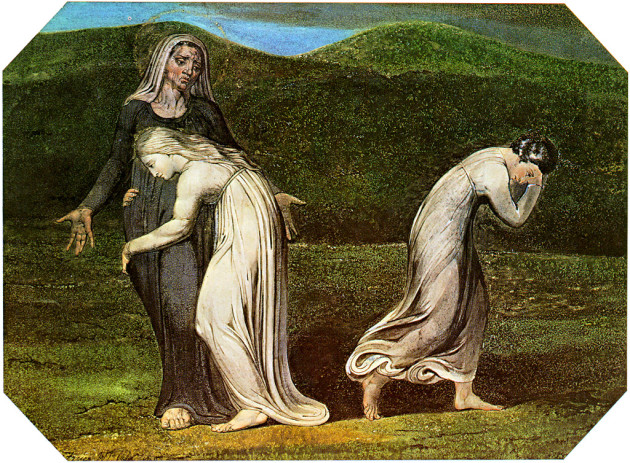
What We Learn From Ruth: The Brazenness of Vulnerability

A 1795 William Blake painting of Naomi asking Ruth and Orpah to go back to Moab.
Judaism has no shortage of feminist heroines—it’s what we learn from them specifically that’s often puzzling to the modern day feminist. We struggle to map our knowledge of present day concerns for the everyday woman against ancient mores while witnessing the inherent strengths in those who bucked the trend.
One such figure is Ruth, a woman I’ve always puzzled over, for her wants and needs are no mystery—but to any of us raised within Judaism, they seem awkward and bizarre. Why would a Moabite princess, privileged and pampered in her position, choose to follow an Israelite widow back to a ravaged land of famine? Why would a woman choose to leave behind the only life she’s ever known to learn at the feet of an old, wise woman? It seems contrary to most of what we learn from society, really.
And it’s not normal, that’s clear. Even Naomi, the Jewish mother-in-law of Ruth, recognizes the societal trend being ignored by her devoted daughter-in-law. Though Ruth’s husband—the son of Naomi—is gone, and Naomi bids her daughter-in-law adieu with a wish to find another husband and bear children, she refuses. She chooses to follow Naomi: for your people are my people, your land is my land, your God is my God.



